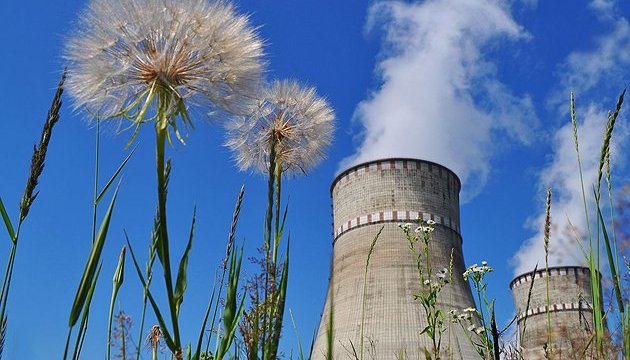УДК 553.041/086-56.02 • Issue 2 (30) / 2019 • 33-45 pages
Yatsenko V.G., Zaborovskaya L.P., Pokalyuk V.V., Lashko S.P., Zaborovsky V.S., Lyzhachenko N.N.
Yatsenko V.G., Ph.D. (Geol), Leading Researcher, SI “Institute of Environmental Geochemistry of the National Academy of Sciences of Ukraine”, vgyatsenko@gmail.com
Zaborovskaya L.P., Ph.D. (Geol), Researcher, SI “Institute of Environmental Geochemistry of the National Academy of Sciences of Ukraine”, zaborovskayalp63@gmail.com
Pokalyuk V.V., Full D. (Geol), Leading Researcher, SI “Institute of Environmental Geochemistry of the National Academy of Sciences of Ukraine”, pvskan@ukr.net
Lashko S.P., Ph.D. (Geol), Associate Professor, Kremenchug National University by Mikhail Ostrogradsky, lashkos@gmail.com
Zaborovsky V.S., Researcher, SI “Institute of Environmental Geochemistry of the National Academy of Sciences of Ukraine”
Lyzhachenko N.N. Ph.D. (Geol), Senior Researcher, SI “Institute of Environmental Geochemistry of the National Academy of Sciences of Ukraine”
Abstract
The paper presents the results of mineralogical, petrographic, electron microscopy, isotopic and X-ray structural studies of Paleoprotero-zoic high-carbon schungite-like rocks of the Mlynkivska area (Pravoberezhnyi district of the Kryvyi Rih-Kremenchuk structural formation zone). Their principal structural, material and genetic similarities with stratified metamorphosed clay-siliceous schungite-bearing rocks from Karelia are established. A characteristic feature of schungite-like rocks of the Mlynkivska area, that distinguishes them from other metamorphosed sediments of the Early Precambrian of the Ukrainian Shield, is the extremely low degree of metamorphism corresponding to the zeolite facies. This is evidenced by the weak crystallization of the siliceous (opal-chalcedony) matrix of rocks and the presence in the rocks of zeolites and a carbonaceous substance that has not reached the graphitization stage. The discovery of such weakly metamorphosed rocks in the Early Precambrian is of exceptional interest for reconstruction of the primary sedimentatary conditions. Numerous biogenic formations (microfossils), which are closest (but not identical) in their morphological characteristics to cyanobacteria of the genus Lyngbiopsis ambigolaevis sp.nov. Oscillatoriacea family, were found in the rocks. The fine-grained carbon-opal-chalcedony matrix of rocks and the presence of microfossils in them indicate the biogenic-chemogenic nature of their primary matter. Despite some differences in the geological settins and the conditions of sedimentation, the similarity of the carbonaceous rocks of the Mlynkivska area with the schungite rocks from Karelia in many parameters, including the characteristic close association of fine-grained siliceous and carbonaceous matter as a result of crystallization and polymerization of a primary homogeneous gel precipitate – organo- silicate complex, indicates that the shungite from Karelia is not a unique phenomenon. This serves as an indication of the possibility of identifying new manifestations of shungite-like rocks in Ukraine in significantly different geological situations that are not typical for the deposits in Karelia. The need for systematic studies of various groups of carbon-bearing rocks of the Ukrainian Shield with the parallel development of methods for their rational use is emphasized.
Key words: paleoproterozoic, Ukrainian shield, schungite, schungite-bearing rocks, high-carbonaceous rocks, microfossils.
Article
Reference
- Sokolov, V. A., Kalinin,Yu. K. (1975), Shungity Karelii i puti ih kompleksnogo ispol‘zovaniya. Petrozavodsk. RU. 240 p.
- Filippov, M.M. (2002), Shungitonosnye porody Onezhskoj struktury. KNC RAN Petrozavodsk. RU. 146 p.
- Snezhko, A.M., Lashko, S.P., Yatsenko, V.G. (2005). O shungitakh i shungitovom mineral’nom syr’ye Ukrainy. Sbornik nauchnyh rabot Instituta geohimii okruzhayushchej sredy. Vyp.11. RU. pp. 80–88.
- Borisov, P.A. (1956), Karel’skie shungity. Petrozavodsk. RU. 92 p.
- Filippov, M.M., Pervunina, A.V. (2008), Zb. nauk. pr. Іnstitutu geologіchnih nauk NAN Ukraїni, Vyp. 1. RU. pp. 178–185.
- Galdobina, L.P. (1975), Tipy’ i svoystva shungitovy’h i shungitsoderjasch’ih porod / pod red. V.A. Sokolova i YU.K. Kalinina. / Shungity’ Karelii i puti ih kompleksnogo ispol’zovani. Petrozavodsk. pp. 20–29.
- Kalinin, Yu.K. (1984), Shungity – novoe uglerodistoe syr’e, Petrozavodsk. RU. pp. 4–16.
- Zhmur, S.I., Gorlenko, V.M., Rozanov, A.Yu. (1993), Litologiya i poleznye iskopaemye, 6. RU. pp. 122–127.
- 9. Timoshina, I.D., Kontorovich, A.E., Borisova, L.S. (2010), Uspekhi organicheskoj geohimii: Materialy Vseros. nauch. konf. (11-15 oktyabrya 2010 g.). RU. pp..329–332.
- Yudovich, Ya.E., Ketris, M.P. (1988), Geohimiya chyornyh slancev, L., Nauka. RU. 272 p.
- Pokalyuk, V.V. Litogenez v rannem dokembrii Krivorozhskogo zhelezorudnogo bassejna. LAP LAMBERT Academic Publishing: 2017. RU. 461 p.(ISBN 978-3-330-32486-6)
- 12. Snezhko, A.M., Raskatova, L.G. (1979), DAN USSR, 3, B. pp. 181–186
- Lyzhachenko, N.M., Mіlans’ka, S., Kurylo, S.І. (2018), Geologіya і korisnі kopalini Ukraїni: Zbіrnik tez naukovoї konferencії, prisvyachenoї 100-rіchnomu yuvіleyu Nacіonal’noї akademії nauk Ukraїni ta Derzhavnoї sluzhbi geologії ta nadr Ukraїni (Kiїv, 2-4 zhovtnya 2018 r.), NAN Ukraїni, Іn-t geohіmії, mіneralogії ta rudoutvorennya іm. M.P.Semenenka. Kyiv. UA. pp.121–123.
- Neelov, A.N. (1977), Litologiya i geohimiya rannego dokembriya. Apatity. RU. pp. 6–105.
- Yushin, A.A., Snezhko, A.M., Yatsenko, V.G. (2003), Sbornik nauchnyh trudov Instituta geohimii okruzhayushchej sredy. Kyiv. Vyp. 8. RU. pp.179–201.
- Artemenko, G.V., Shymlyanskyy L.V., Bekker, A. Yu. (2018). U-Pb vozrast (LA-ISP-MS) klastogennogo circona gleevatskoj svity Krivbassa (Ukrainski sit). Geol. Journal. No 2 (363). RU. P. 42–57.
- Zhelezisto-kremnistyye formytsii dokembriya yevropeyskoy chasti SSSR. Stratigrafiya. Kiev: Nauk. dumka, 1988. RU. 191 p.
